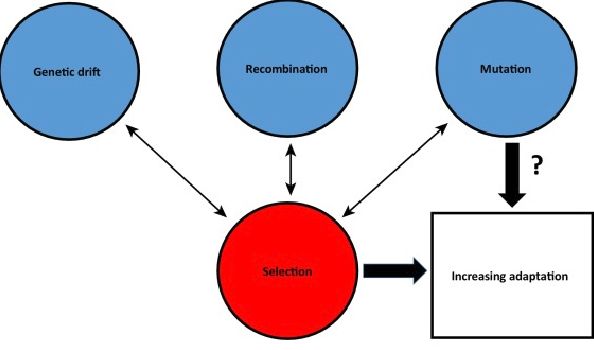

النبات

مواضيع عامة في علم النبات

الجذور - السيقان - الأوراق

النباتات الوعائية واللاوعائية

البذور (مغطاة البذور - عاريات البذور)

الطحالب

النباتات الطبية


الحيوان

مواضيع عامة في علم الحيوان

علم التشريح

التنوع الإحيائي

البايلوجيا الخلوية


الأحياء المجهرية

البكتيريا

الفطريات

الطفيليات

الفايروسات


علم الأمراض

الاورام

الامراض الوراثية

الامراض المناعية

الامراض المدارية

اضطرابات الدورة الدموية

مواضيع عامة في علم الامراض

الحشرات


التقانة الإحيائية

مواضيع عامة في التقانة الإحيائية


التقنية الحيوية المكروبية

التقنية الحيوية والميكروبات

الفعاليات الحيوية

وراثة الاحياء المجهرية

تصنيف الاحياء المجهرية

الاحياء المجهرية في الطبيعة

أيض الاجهاد

التقنية الحيوية والبيئة

التقنية الحيوية والطب

التقنية الحيوية والزراعة

التقنية الحيوية والصناعة

التقنية الحيوية والطاقة

البحار والطحالب الصغيرة

عزل البروتين

هندسة الجينات


التقنية الحياتية النانوية

مفاهيم التقنية الحيوية النانوية

التراكيب النانوية والمجاهر المستخدمة في رؤيتها

تصنيع وتخليق المواد النانوية

تطبيقات التقنية النانوية والحيوية النانوية

الرقائق والمتحسسات الحيوية

المصفوفات المجهرية وحاسوب الدنا

اللقاحات

البيئة والتلوث


علم الأجنة

اعضاء التكاثر وتشكل الاعراس

الاخصاب

التشطر

العصيبة وتشكل الجسيدات

تشكل اللواحق الجنينية

تكون المعيدة وظهور الطبقات الجنينية

مقدمة لعلم الاجنة


الأحياء الجزيئي

مواضيع عامة في الاحياء الجزيئي


علم وظائف الأعضاء


الغدد

مواضيع عامة في الغدد

الغدد الصم و هرموناتها

الجسم تحت السريري

الغدة النخامية

الغدة الكظرية

الغدة التناسلية

الغدة الدرقية والجار الدرقية

الغدة البنكرياسية

الغدة الصنوبرية

مواضيع عامة في علم وظائف الاعضاء

الخلية الحيوانية

الجهاز العصبي

أعضاء الحس

الجهاز العضلي

السوائل الجسمية

الجهاز الدوري والليمف

الجهاز التنفسي

الجهاز الهضمي

الجهاز البولي


المضادات الميكروبية

مواضيع عامة في المضادات الميكروبية

مضادات البكتيريا

مضادات الفطريات

مضادات الطفيليات

مضادات الفايروسات

علم الخلية

الوراثة

الأحياء العامة

المناعة

التحليلات المرضية

الكيمياء الحيوية

مواضيع متنوعة أخرى

الانزيمات
How are gene mutations involved in evolution
المؤلف:
Genetics Home Reference
المصدر:
Help Me Understand Genetics
الجزء والصفحة:
13-10-2020
2155
How are gene mutations involved in evolution?
Evolution is the process by which populations of organisms change over generations. Genetic variations underlie these changes. Genetic variations can arise from gene mutations or from genetic recombination (a normal process in which genetic material is rearranged as a cell is getting ready to divide).
These variations often alter gene activity or protein function, which can introduce different traits in an organism. If a trait is advantageous and helps the individual survive and reproduce, the genetic variation is more likely to be passed to the next generation (a process known as natural selection). Over time, as generations of individuals with the trait continue to reproduce, the advantageous trait becomes increasingly common in a population, making the population different than an ancestral one. Sometimes the population becomes so different that it is considered a new species.
Not all mutations lead to evolution. Only hereditary mutations, which occur in egg or sperm cells, can be passed to future generations and potentially contribute to evolution. Some mutations occur during a person’s lifetime in only some of the body’s cells and are not hereditary, so natural selection cannot play a role. Also, many genetic changes have no impact on the function of a gene or protein on page 25and are not helpful or harmful. In addition, the environment in which a population of organisms lives is integral to the selection of traits.
Some differences introduced by mutations may help an organism survive in one setting but not in another—for example, resistance to a certain bacteria is only advantageous if that bacteria is found in a particular location and harms those who live there.
So why do some harmful traits, like genetic diseases, persist in populations instead of being removed by natural selection? There are several possible explanations, but in many cases, the answer is not clear. For some conditions, such as the neurological condition Huntington disease, signs and symptoms do not occur until after a person has children, so the gene mutation can be passed on despite being harmful. For other harmful traits, a phenomenon called reduced penetrance , in which some individuals with a diseaseassociated mutation do not show signs and symptoms of the condition, can also allow harmful genetic variations to be passed to future generations.
For some conditions, having one mutated copy of a gene in each cell is advantageous,
while having two mutated copies causes disease. The best-studied example of this phenomenon is sickle cell disease: Having two mutated copies of the HBB gene in each cell results in the disease, but having only one copy provides some resistance to malaria. This disease resistance helps explain why the mutations that cause sickle cell disease are still found in many populations, especially in areas where malaria is prevalent.

 الاكثر قراءة في مواضيع عامة في الاحياء الجزيئي
الاكثر قراءة في مواضيع عامة في الاحياء الجزيئي
 اخر الاخبار
اخر الاخبار
اخبار العتبة العباسية المقدسة

الآخبار الصحية















 قسم الشؤون الفكرية يصدر كتاباً يوثق تاريخ السدانة في العتبة العباسية المقدسة
قسم الشؤون الفكرية يصدر كتاباً يوثق تاريخ السدانة في العتبة العباسية المقدسة "المهمة".. إصدار قصصي يوثّق القصص الفائزة في مسابقة فتوى الدفاع المقدسة للقصة القصيرة
"المهمة".. إصدار قصصي يوثّق القصص الفائزة في مسابقة فتوى الدفاع المقدسة للقصة القصيرة (نوافذ).. إصدار أدبي يوثق القصص الفائزة في مسابقة الإمام العسكري (عليه السلام)
(نوافذ).. إصدار أدبي يوثق القصص الفائزة في مسابقة الإمام العسكري (عليه السلام)


















